Attributed to Francois Villemsens (French, fl. mid 19th century): An impressive pair of First Universal 'Great Exhibition' gilt bronze Neptune ewersCirca 1851 Each with mythological aquatic figural decoration, the elaborate rocaille cast urn bodies with intertwined sea serpent high scrolling handles and eagle pouring lips, the swept upper bodies cast with the sea gods drawn by twin pairs of hippocampi, trumpeting mermaids and mermen, shells and acanthus leaves, above foliate girdles applied with Neptune masks, dolphins and alternating shells and starfish, each raised on mermen and mermaid tripod supports, above rockwork tripartite platform footed bases, 56.5cm high (2)FootnotesThe model of the offered ewers is almost identical to a vase exhibited by the bronzier François Villemsens at the first Universal Exhibition known as the Great Exhibition, held in London in 1851. In the Art Journal illustrated catalogue the entry notes for his work commented: "the three vases are from the establishment of M. Villemsens of Paris, worker in bronze, and manufacturer of church ornaments; the latter branch of business especially, being largely carried on by this house. During our visit to Paris towards the close of the past year, we saw in his extensive showrooms a vast variety of objects, exhibiting more or less taste in composition, and ingenuity of workmanship; these were principally executed in bronze and in brass, and were adapted as well for the embellishment of the private dwelling as for purposes of ecclesiastical use and decoration - statues, vases, chandeliers, candelabra, delicate rail-work, etc. The three bronze vases and dishes selected from the contributions of this firm are distinguished by beauty of outline and elaborate ornament, approaching very closely to the best antiques". Likely descended from a family of goldsmiths in the 18th century, François Villemsens established his workshop in the Marais, first at 18 rue Michel Le Comte, then at 71 rue du Temple. In 1834, he exhibited a facsimile of the armour of Francis I, which was hailed by the Archives du Commerce et de l'Industrie (Paris, 1834, p. 157). By 1835, he entered the Réunion des Fabricants de Bronze, heir to the former corporation of foundrymen, and regularly participated in the Expositions des Produits de l'Industrie Française. Winning a silver medal at the Exhibition of 1839, Villemsens joined the 'Bronze of Art and Furnishings' category alongside Thomire & Cie and Victor Paillard before winning a further silver medal at the last Exposition des Produits de l'Industrie Française in 1849. With these successes he approached the Universal Exhibition in London in 1851 where he won a new medal by submitting the vases mentioned above, including the Neptune vase. The success led him to New York where he participated in the Universal Exhibition of 1853 and appeared in the official catalogue of the New York exhibition of the industry of all nations, p. 154, at No. 15 as "Bronze candelabras, groups, lamps, etc. Villemsens & Co, manu. 71 rue de Temple, Paris"... He was again a medallist at the Universal Exhibition in Paris in 1855 and by 1863 Villemsens had offered to finance the award of a carving prize that would be awarded each year by the Réunion des Fabricants de Bronze. After participating in the Universal Exhibition of 1867 where he presented a cast door from the Baptistery of Florence, he finally retired from business. From the second quarter of the 19th century onwards sculptors, bronziers and goldsmiths particularly appreciated the shape of the ewer to express ornamentation in all its manifestations, giving a free rein to exuberance and eclecticism. Renaissance art was one of their main sources of inspiration, and in particular Mannerism, utilising mythological themes and motifs as illustrated by the present lot. The sculptor Adolphe-Victor Geoffroy-Dechaume and the goldsmith Charles Wagner, who were contemporaries of Villemsens, similarly produced a ewer on the the
Attributed to Francois Villemsens (French, fl. mid 19th century): An impressive pair of First Universal 'Great Exhibition' gilt bronze Neptune ewersCirca 1851 Each with mythological aquatic figural decoration, the elaborate rocaille cast urn bodies with intertwined sea serpent high scrolling handles and eagle pouring lips, the swept upper bodies cast with the sea gods drawn by twin pairs of hippocampi, trumpeting mermaids and mermen, shells and acanthus leaves, above foliate girdles applied with Neptune masks, dolphins and alternating shells and starfish, each raised on mermen and mermaid tripod supports, above rockwork tripartite platform footed bases, 56.5cm high (2)FootnotesThe model of the offered ewers is almost identical to a vase exhibited by the bronzier François Villemsens at the first Universal Exhibition known as the Great Exhibition, held in London in 1851. In the Art Journal illustrated catalogue the entry notes for his work commented: "the three vases are from the establishment of M. Villemsens of Paris, worker in bronze, and manufacturer of church ornaments; the latter branch of business especially, being largely carried on by this house. During our visit to Paris towards the close of the past year, we saw in his extensive showrooms a vast variety of objects, exhibiting more or less taste in composition, and ingenuity of workmanship; these were principally executed in bronze and in brass, and were adapted as well for the embellishment of the private dwelling as for purposes of ecclesiastical use and decoration - statues, vases, chandeliers, candelabra, delicate rail-work, etc. The three bronze vases and dishes selected from the contributions of this firm are distinguished by beauty of outline and elaborate ornament, approaching very closely to the best antiques". Likely descended from a family of goldsmiths in the 18th century, François Villemsens established his workshop in the Marais, first at 18 rue Michel Le Comte, then at 71 rue du Temple. In 1834, he exhibited a facsimile of the armour of Francis I, which was hailed by the Archives du Commerce et de l'Industrie (Paris, 1834, p. 157). By 1835, he entered the Réunion des Fabricants de Bronze, heir to the former corporation of foundrymen, and regularly participated in the Expositions des Produits de l'Industrie Française. Winning a silver medal at the Exhibition of 1839, Villemsens joined the 'Bronze of Art and Furnishings' category alongside Thomire & Cie and Victor Paillard before winning a further silver medal at the last Exposition des Produits de l'Industrie Française in 1849. With these successes he approached the Universal Exhibition in London in 1851 where he won a new medal by submitting the vases mentioned above, including the Neptune vase. The success led him to New York where he participated in the Universal Exhibition of 1853 and appeared in the official catalogue of the New York exhibition of the industry of all nations, p. 154, at No. 15 as "Bronze candelabras, groups, lamps, etc. Villemsens & Co, manu. 71 rue de Temple, Paris"... He was again a medallist at the Universal Exhibition in Paris in 1855 and by 1863 Villemsens had offered to finance the award of a carving prize that would be awarded each year by the Réunion des Fabricants de Bronze. After participating in the Universal Exhibition of 1867 where he presented a cast door from the Baptistery of Florence, he finally retired from business. From the second quarter of the 19th century onwards sculptors, bronziers and goldsmiths particularly appreciated the shape of the ewer to express ornamentation in all its manifestations, giving a free rein to exuberance and eclecticism. Renaissance art was one of their main sources of inspiration, and in particular Mannerism, utilising mythological themes and motifs as illustrated by the present lot. The sculptor Adolphe-Victor Geoffroy-Dechaume and the goldsmith Charles Wagner, who were contemporaries of Villemsens, similarly produced a ewer on the the
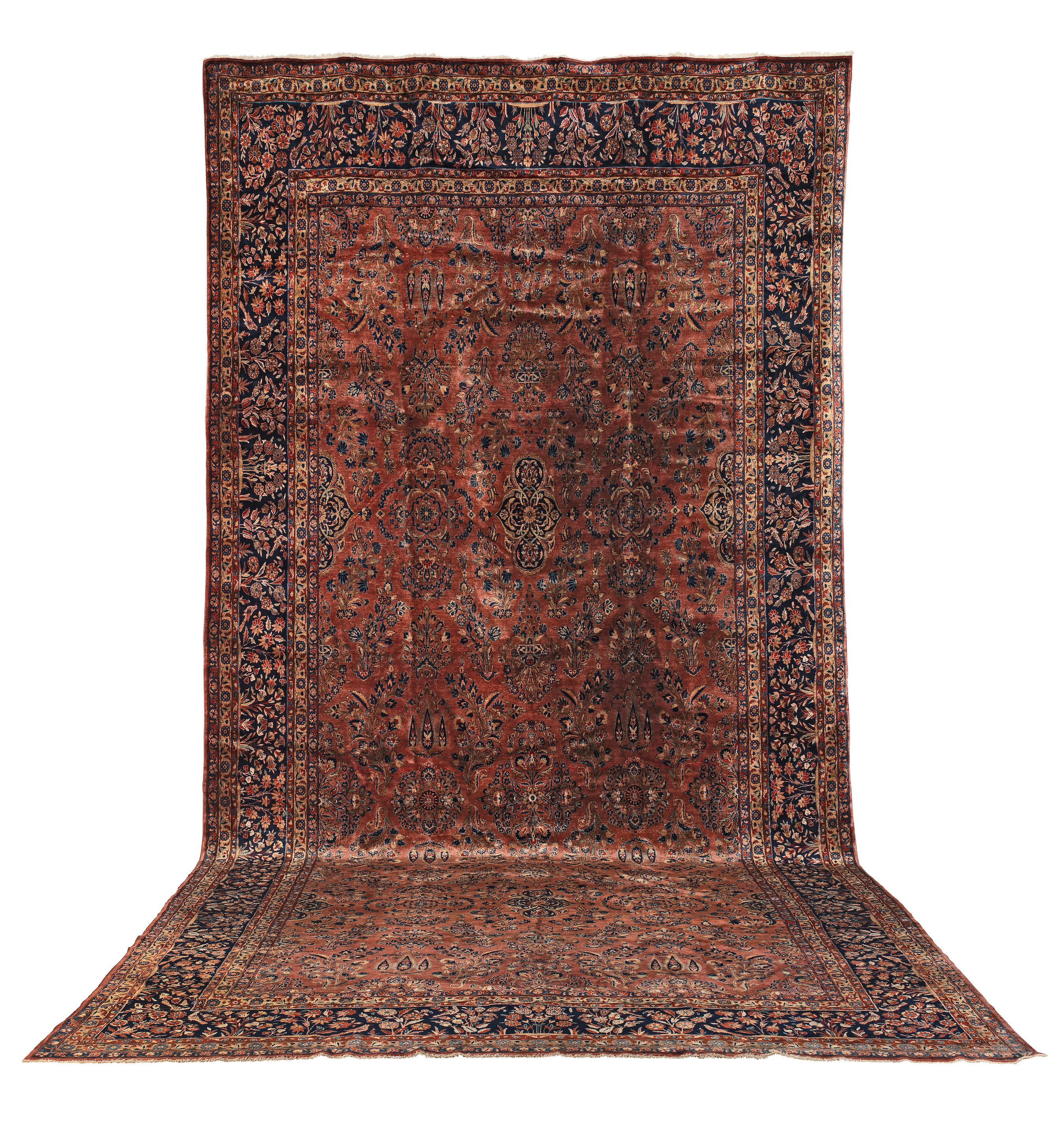


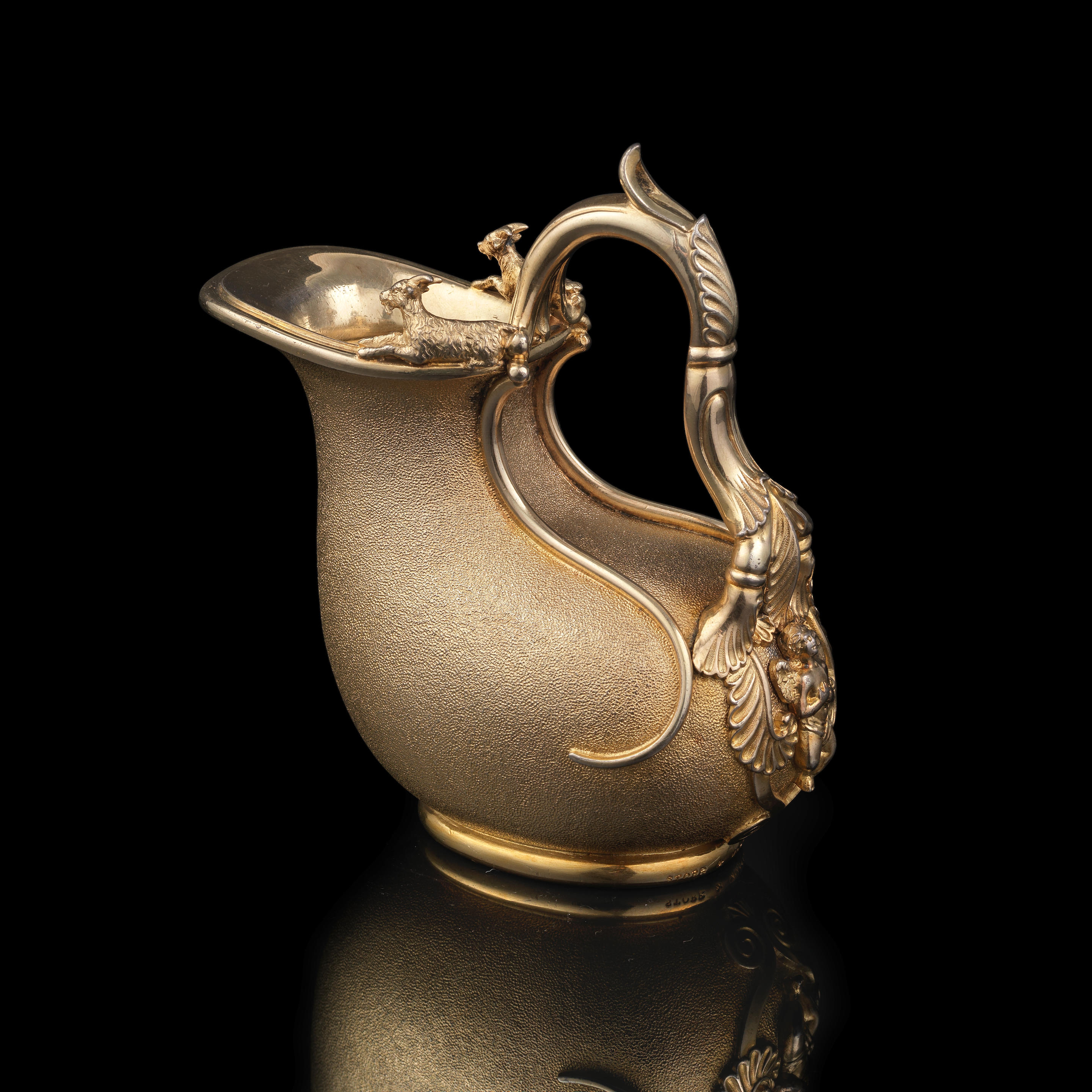


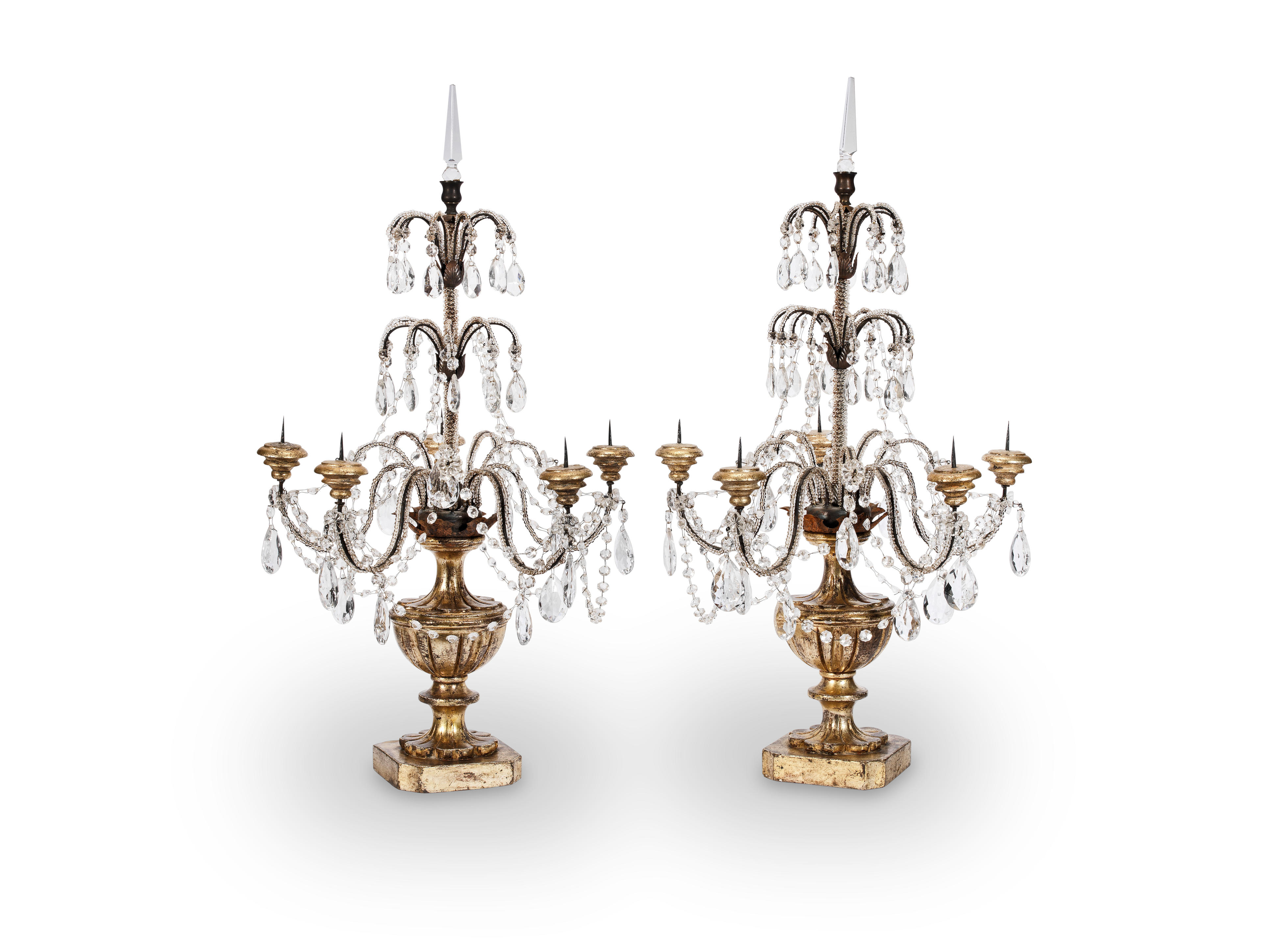


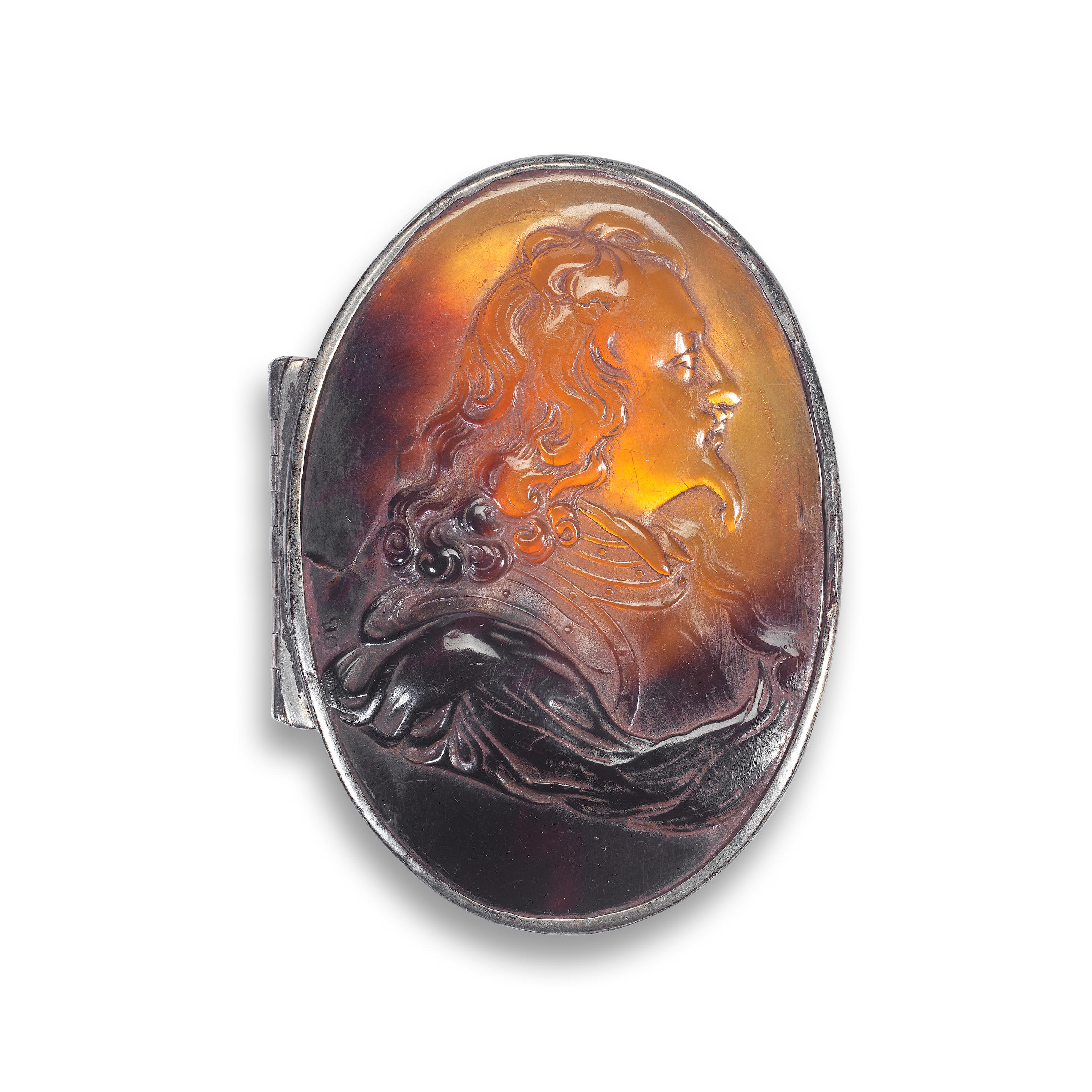

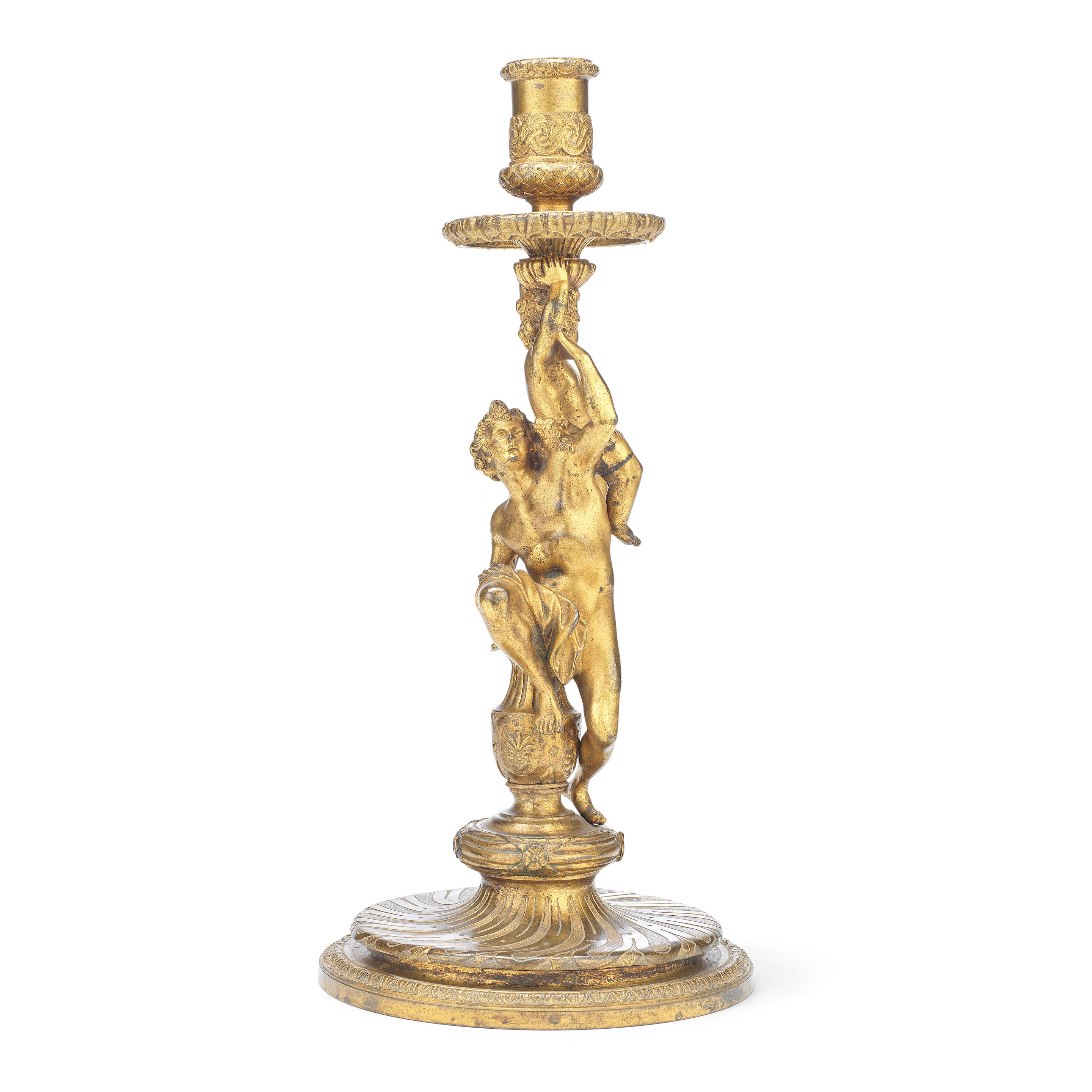



Try LotSearch and its premium features for 7 days - without any costs!
Be notified automatically about new items in upcoming auctions.
Create an alert